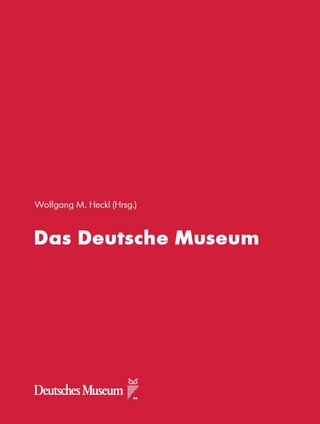
Art Collecting and Middle Class Culture from London to Brighton, 1840–1914
Seiten
2024
Routledge (Verlag)
978-1-032-53823-5 (ISBN)
Routledge (Verlag)
978-1-032-53823-5 (ISBN)
- Titel z.Zt. nicht lieferbar
- Versandkostenfrei innerhalb Deutschlands
- Auch auf Rechnung
- Verfügbarkeit in der Filiale vor Ort prüfen
- Artikel merken
This study explores the interplay between money, status, politics and art collecting in the public and private lives of members of the wealthy trading classes in Brighton during the period of 1840-1914.
This study explores the interplay between money, status, politics and art collecting in the public and private lives of members of the wealthy trading classes in Brighton during the period 1840–1914.
Chapters focus on the collecting practices of five rich and upwardly mobile Victorians: William Coningham (1815–84), Henry Hill (1813–82), Henry Willett (1823–1905) and Harriet Trist (1816–96) and her husband John Hamilton Trist (1812–91). The book examines the relationship between the wealth of these would-be members of the Brighton bourgeoisie and the social and political meanings of their art collections paid for out of fortunes made from sugar, tailoring, beer and wine. It explores their luxury lifestyles and civic activities including the making of Brighton museum and art gallery, which reflected a paradoxical mix of patrician and liberal views, of aristocratic aspiration and radical rhetoric. It also highlights the centrality of the London art world to their collecting facilitated by the opening of the London to Brighton railway line in 1841.
The book will be of interest to scholars working in art history, museum studies and British history.
This study explores the interplay between money, status, politics and art collecting in the public and private lives of members of the wealthy trading classes in Brighton during the period 1840–1914.
Chapters focus on the collecting practices of five rich and upwardly mobile Victorians: William Coningham (1815–84), Henry Hill (1813–82), Henry Willett (1823–1905) and Harriet Trist (1816–96) and her husband John Hamilton Trist (1812–91). The book examines the relationship between the wealth of these would-be members of the Brighton bourgeoisie and the social and political meanings of their art collections paid for out of fortunes made from sugar, tailoring, beer and wine. It explores their luxury lifestyles and civic activities including the making of Brighton museum and art gallery, which reflected a paradoxical mix of patrician and liberal views, of aristocratic aspiration and radical rhetoric. It also highlights the centrality of the London art world to their collecting facilitated by the opening of the London to Brighton railway line in 1841.
The book will be of interest to scholars working in art history, museum studies and British history.
David Adelman is an independent researcher in nineteenth century cultural history.
1. Introduction: Settings And Scenarios, Classes And Collections 2. ‘The Palace of Science, Art and Literature’ and the Mission to Civilize the People of Brighton 1850-1914 3. William Coningham: Connoisseur, Radical Politician, A Collector of Contradictions 4. How Henry Hill, Bespoke Tailor to the Rich and Self-Made Man also Became a Gentleman of Taste 5. The Reinvention of Henry Willett, a Collector of Collections and an ‘Imaginary Museum’ 6. The Pre-Raphaelite Collection of Harriet and John Trist: A Collecting Couple in a Companionate Marriage 7. Final Reflections And A Royal Parade In 1877
| Erscheinungsdatum | 22.08.2024 |
|---|---|
| Reihe/Serie | Routledge Research in Art History |
| Zusatzinfo | 10 Halftones, color; 28 Halftones, black and white; 10 Illustrations, color; 28 Illustrations, black and white |
| Verlagsort | London |
| Sprache | englisch |
| Maße | 174 x 246 mm |
| Gewicht | 640 g |
| Themenwelt | Kunst / Musik / Theater ► Kunstgeschichte / Kunststile |
| Reisen ► Reiseführer | |
| Geisteswissenschaften ► Geschichte ► Hilfswissenschaften | |
| ISBN-10 | 1-032-53823-6 / 1032538236 |
| ISBN-13 | 978-1-032-53823-5 / 9781032538235 |
| Zustand | Neuware |
| Informationen gemäß Produktsicherheitsverordnung (GPSR) | |
| Haben Sie eine Frage zum Produkt? |
Mehr entdecken
aus dem Bereich
aus dem Bereich
Anforderungen an das digitalisierte Kulturerbe
Buch | Softcover (2023)
transcript (Verlag)
29,00 €
Buch | Hardcover (2024)
Wallstein Verlag
38,00 €


